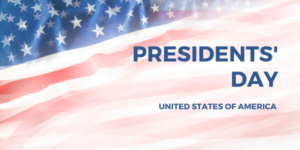President’s Day is observed on the third Monday of February each year. It is a federal holiday that honors the Presidents of the United States. The day particularly celebrates George Washington and Abraham Lincoln. The day has evolved into a celebration of all American Presidents. Its origins and transition into a more generalized holiday show the complexities of American history and culture. This blog post examines the origins of President’s Day. It discusses its evolution over the years. The post also explores the various ways people celebrate it across the nation.
The Origins of President’s Day
We can trace the roots of President’s Day back to the celebration of George Washington’s birthday. Washington was the first President of the United States. He is a revered figure in American history. Washington was born on February 22, 1732. For many years, people celebrated Washington’s birthday as a national holiday. In 1885, President Chester A. Arthur signed a bill into law. It made Washington’s Birthday a federal holiday. The celebration was designated to be on February 22. At this time, the holiday was strictly a day to honor Washington.
Over time, the need for a more inclusive celebration of all presidents became clear. Americans began to recognize Lincoln’s significance. He was born on February 12, 1809. In the decades that followed, proposals for a unified holiday emerged. They suggested celebrating both Washington and Lincoln on a single day.
Moving to a Monday Holiday
The transition towards a more generalized President’s Day started in the early 1970’s. This happened when Congress passed the Uniform Monday Holiday Act in 1968. This act aimed to offer more three-day weekends for the nation’s workers. It did this by moving the celebration of certain holidays to Mondays. The Act re-scheduled Washington’s Birthday to the third Monday of February, which resulted in a long weekend for many Americans. The new date is close to both Washington’s and Lincoln’s birthdays. This proximity increased recognition of President’s Day as a celebration of all American Presidents, not just Washington.
Initially, the holiday was still officially referred to as Washington’s Birthday. Over the years, President’s Day took root in popular culture. The shift represented a broader and more nationalistic view of the presidency. It acknowledged the contributions of all those who have held the office.
The Celebration of President’s Day
Today, President’s Day serves multiple purposes. It is an opportunity for Americans to think about the contributions of past Presidents and the ideals they embodied. The day often sparks discussions about governmental policies. It leads to conversations on the impact of leadership on American societal values. Additionally, it has evolved into a day of retail sales and promotions, akin to how other holidays are commercialized.
Many retailers use the day to entice consumers with special deals, offering everything from car sales to furniture discounts. These promotions encourage people to shop during the long weekend. The commercial aspect of President’s Day has become a prominent feature. It’s worth remembering the holiday’s more profound significance. Engage in discussions about presidential history and leadership throughout the nation’s timeline.
How President’s Day is Observed
In some states, President’s Day is tied directly to educational activities. Students learn about the lives, policies, and historical context of America’s Presidents. Schools organize events, projects, and discussions to help students understand the presidency’s importance in shaping the nation.
Many students engage in activities like essay writing, debates, or presentations about various presidents. These activities allow them to explore each leader’s impact on American history and culture. Moreover, libraries and museums often hold special exhibitions or programs centered around American presidents. These events offer rich educational resources for the public.
On a broader scale, President’s Day provides an opportunity. Civic organizations can conduct public discussions and host community events focusing on presidential history. Celebrating this holiday can foster a sense of national pride. It encourages citizens to think about the United States’ democratic process. It also promotes civics education and custodians’ roles in shaping societal norms and standards.
The Future of President’s Day
In a constantly evolving society, how America observes holidays can change as cultural values shift. President’s Day has dual roots in respecting historical figures and participating in modern consumer culture. This illustrates how society can embrace both reverence and practicality. New generations will take the mantle of leadership. As the intellectual discourse surrounding the presidency evolves, the significance of President’s Day will continue to adapt. How it is celebrated will also adapt.
Some Americans celebrate the day through shopping and leisure activities. Others engage in deep scientific discussions. They also join in sociopolitical talks that focus on the functions of the presidency in contemporary society. The holiday reflects a celebration of leadership and signifies the memory of a nation’s founding. President’s Day serves as a reminder of the ongoing journey that Americans share through their diverse history and challenges.
In Conclusion
President’s Day has transformed from a birthday celebration for a single leader into a broader homage. It now honors the collective leadership of the United States. Its evolution reflects the changing landscape of American identity, civic engagement, and cultural awareness. This holiday promotes reflection through educational initiatives, community discussions, and retail promotions. Its significance will continue to inspire thoughts on the greatness and complexities of American leadership.

